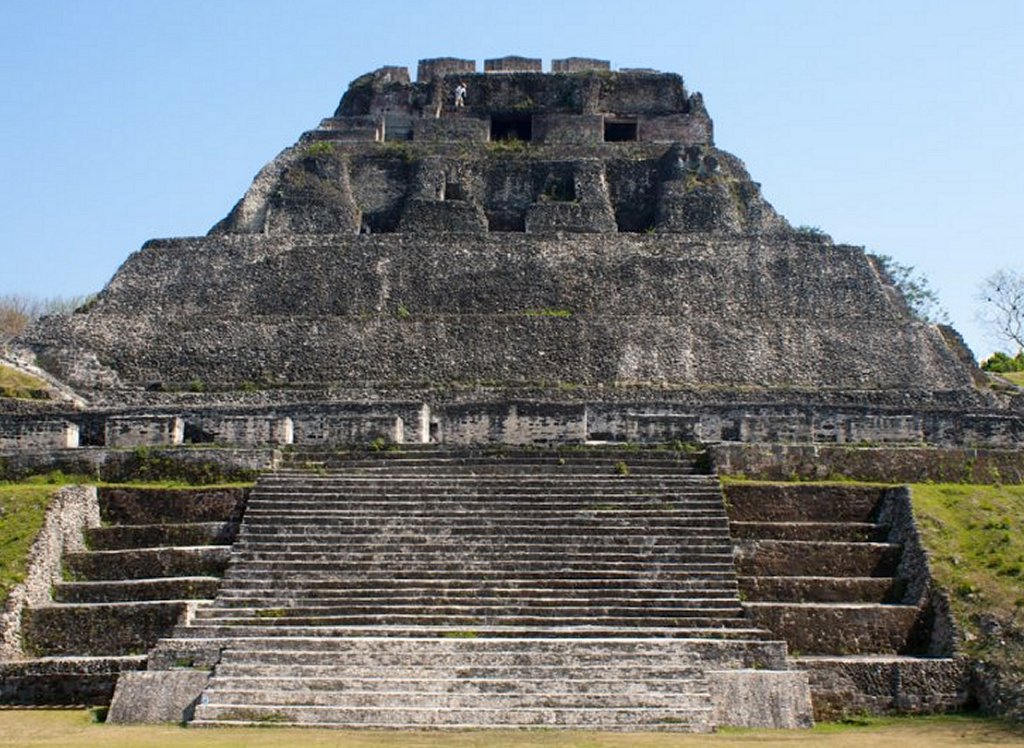Ruins Of Xunantunich – Mayan City That Once Flourished
A. Sutherland - AncientPages.com - Xunantunich, a major ceremonial center of the Maya Civilization, is an ancient Maya archaeological site atop a ridge above the Mopan River, about 80 miles (130 km) west of Belize City, Cayo District, in western Belize.
"El Castillo" at Xunantunich. Photo credits: Denis Barthel - CC BY-SA 4.0
It comprises six major plazas, surrounded by over twenty-five temples and palaces.
The name 'Xunantunich' derives from the Yucatec Maya language and means 'Stone Woman' (or "Lady of the Rock"). It is a modern name; its ancient name is currently unknown.
Local legend holds that around the end of the 1800s, a man from the village of San Jose Succotz went hunting near the site and suddenly saw a beautiful statuesque Maya maiden standing motionless in the rays of the rising sun near the mouth of a cave, which extended beneath the giant structure.
Stricken by her appearance, the man threw his gun aside and ran downhill to the village. After recounting his tale, several villagers led by the native priest returned to the site.
Arriving at the large mound, they found the mouth of the tunnel, but the stone maiden had disappeared. After that, locals claim that the woman has appeared to several others, but none have been able to follow her into the cavern.
Xunantunich was first explored in the 1800s by Dr. Thomas Gann, a British medical officer who later returned to the ancient place. As records state, he unearthed many Maya treasures, the history of which have been lost and the whereabouts unknown.
The place was occupied perhaps as early as 300 B.C., but most of the Maya architecture there was developed in the late classic period. Later, the inhabitants of Xunantunich continually built new temples and residences over older buildings, enlarging the ceremonial center by raising the platforms and structures in the process.
Xunantunich has a very representative structure known as The Castle (El Castillo), which is the second tallest pre-Columbian building in Belize after the Temple of El Caracol, reaching a height of 40 meters from; it offers from the top an impressive view of the jungle canopy, the other ruins, and even beyond the border.
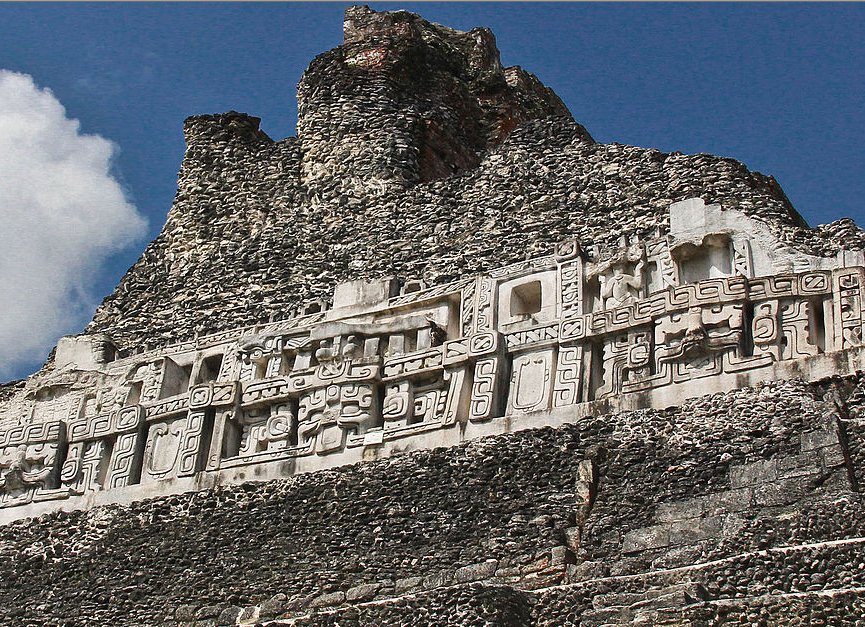 Carvings on the peak of the El Castillo pyramid (Structure A6) at Xunantunich, Belize. Image credit: cjuneau - CC BY 2.0
Carvings on the peak of the El Castillo pyramid (Structure A6) at Xunantunich, Belize. Image credit: cjuneau - CC BY 2.0
The site's name comes from the Yucatec Maya for Stone Woman and is a modern name, like those given to many other archaeological sites in Mesoamerica. Old names still need to be discovered. According to Belizeans, the stone woman refers to a ghost that lives in the archaeological zone. The ghost is all black, and his eyes are lit like fire.
The figure usually appears before the Castle and then ascends the stone steps to disappear into the stone wall. After Xunantunich ceased being a famous ceremonial and civic center, some people continued to occupy its area or perhaps reoccupied it. The excavations of Xunantunich have confirmed that the Maya people lived in the Belize region for centuries.
Later, extensive archaeological work was done in Xunantunich, now an impressive, well-excavated, and easily accessible Mayan site.
Xunantunich was a thriving Mayan city during the Classic Period. The hills were first occupied between 400 BC and 200 BC, and it was in 600 AD that Xunantunich was first used as a ceremonial site, making the entire site some 1400 years old. The site has an ancient ball court where intense pok ta pok ball games were organized, and the loser of the game faced sudden death.
However, the Maya warriors often lost their heads regardless of whether they won. Not far from Xunantunich, there is a mysterious cave that was important for Mayan rituals and human sacrifice.
Interestingly, during a time when most of the Mayan civilizations were crumbling, Xunantunich was managing to expand its city and its power over other areas within the valley. Around 1000 AD, however, Xunantunich was abandoned.
Written by – A. Sutherland - AncientPages.com Senior Staff Writer
Updated on January 14, 2024
Copyright © AncientPages.com All rights reserved. This material may not be published, broadcast, rewritten or redistributed in whole or part without the express written permission of AncientPages.com
Expand for referencesMore From Ancient Pages
-
 Ancient Roman Portable Toilets Studied By Scientists
Archaeology | Feb 11, 2022
Ancient Roman Portable Toilets Studied By Scientists
Archaeology | Feb 11, 2022 -
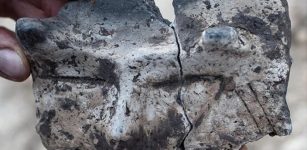 Unusual 7,000-Year-Old Jar Decorated With A Horned Face Found In Poland
Archaeology | Sep 3, 2020
Unusual 7,000-Year-Old Jar Decorated With A Horned Face Found In Poland
Archaeology | Sep 3, 2020 -
 Marble Head Of Roman Emperor Augustus Unearthed In Isernia, Italy
Archaeology | May 7, 2021
Marble Head Of Roman Emperor Augustus Unearthed In Isernia, Italy
Archaeology | May 7, 2021 -
 1,600-Year-Old Pendants Depicting Humans And Animals Excavated In Ancient Port-City Of Assos
Archaeology | Jan 21, 2020
1,600-Year-Old Pendants Depicting Humans And Animals Excavated In Ancient Port-City Of Assos
Archaeology | Jan 21, 2020 -
 Missing Lines From Epic Of Gilgamesh Shed New Light On Humbaba
Artifacts | Oct 9, 2015
Missing Lines From Epic Of Gilgamesh Shed New Light On Humbaba
Artifacts | Oct 9, 2015 -
 Surprising Discovery – Replica In The Field Museum Is A 3,000-Year-Old Sword
Artifacts | Jan 18, 2023
Surprising Discovery – Replica In The Field Museum Is A 3,000-Year-Old Sword
Artifacts | Jan 18, 2023 -
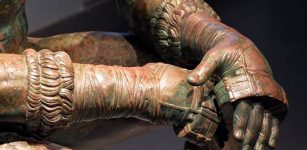 Boxer At Rest – Rare Sculpture And Masterpiece Of Hellenistic Bronze Art
Artifacts | May 21, 2021
Boxer At Rest – Rare Sculpture And Masterpiece Of Hellenistic Bronze Art
Artifacts | May 21, 2021 -
 Knowledge Of Divine Alien Beings And High-Tech In Ancient Egypt Described In Sacred Books And Papyrus – The God Who Spoke About Time Dilation – Part 1
Featured Stories | May 12, 2021
Knowledge Of Divine Alien Beings And High-Tech In Ancient Egypt Described In Sacred Books And Papyrus – The God Who Spoke About Time Dilation – Part 1
Featured Stories | May 12, 2021 -
 Disir: Elusive Female Guardian Spirits Of Fate And Harbingers Of Death And War
Featured Stories | Aug 28, 2023
Disir: Elusive Female Guardian Spirits Of Fate And Harbingers Of Death And War
Featured Stories | Aug 28, 2023 -
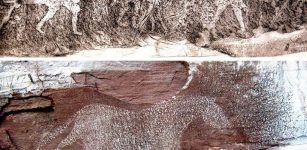 Sunduki – ‘Home Of The Gods’ – One Of The World’s Oldest Astronomical Observatories
Civilizations | Oct 4, 2015
Sunduki – ‘Home Of The Gods’ – One Of The World’s Oldest Astronomical Observatories
Civilizations | Oct 4, 2015 -
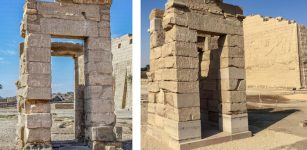 Ancient Egyptian Monuments Threatened By Climate Change Restored By Oriental Institute
News | Mar 9, 2023
Ancient Egyptian Monuments Threatened By Climate Change Restored By Oriental Institute
News | Mar 9, 2023 -
 Durendal – Magical Sword Of Knight Roland That Cut Stone Boulders With A Single Strike
Featured Stories | Jan 19, 2022
Durendal – Magical Sword Of Knight Roland That Cut Stone Boulders With A Single Strike
Featured Stories | Jan 19, 2022 -
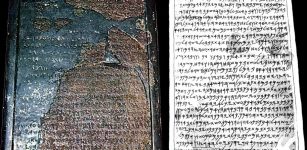 New Reading Of Mesha Stele And Consequences For Biblical History
Archaeology | May 2, 2019
New Reading Of Mesha Stele And Consequences For Biblical History
Archaeology | May 2, 2019 -
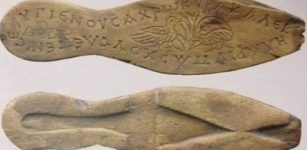 Byzantine Sandals With A Nice Message Found In The Harbor Of Eleutherios (Theodosius) – Now On Display
Artifacts | Apr 12, 2023
Byzantine Sandals With A Nice Message Found In The Harbor Of Eleutherios (Theodosius) – Now On Display
Artifacts | Apr 12, 2023 -
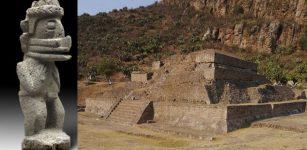 Who Built The Mysterious Huapalcalco Pyramid – Mexico’s Smallest Pyramid?
Featured Stories | Mar 29, 2018
Who Built The Mysterious Huapalcalco Pyramid – Mexico’s Smallest Pyramid?
Featured Stories | Mar 29, 2018 -
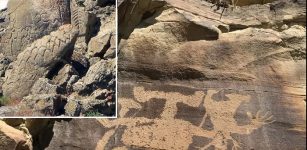 12,000-Year-Old Rock Art In North America – Dating Petroglyphs In The American West
Archaeology | Mar 4, 2022
12,000-Year-Old Rock Art In North America – Dating Petroglyphs In The American West
Archaeology | Mar 4, 2022 -
 Dresden Codex – Probably The Oldest And Best Preserved Book Of The Maya
Ancient History Facts | Jun 24, 2016
Dresden Codex – Probably The Oldest And Best Preserved Book Of The Maya
Ancient History Facts | Jun 24, 2016 -
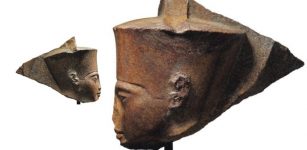 Egypt Calls On Christie’s Auction House In London To Stop Sale Of Tutankhamun Statue Head
Archaeology | Jun 14, 2019
Egypt Calls On Christie’s Auction House In London To Stop Sale Of Tutankhamun Statue Head
Archaeology | Jun 14, 2019 -
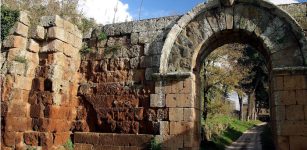 New Clues About The Fascinating Ancient Roman City Falerii Novi Revealed By Scientists
Archaeology | Sep 13, 2022
New Clues About The Fascinating Ancient Roman City Falerii Novi Revealed By Scientists
Archaeology | Sep 13, 2022 -
 Secret Ancient Knowledge Of Portals Leading To Unknown Realms – Mysteries Of The Past And Present – Part 2
Featured Stories | Dec 7, 2021
Secret Ancient Knowledge Of Portals Leading To Unknown Realms – Mysteries Of The Past And Present – Part 2
Featured Stories | Dec 7, 2021

